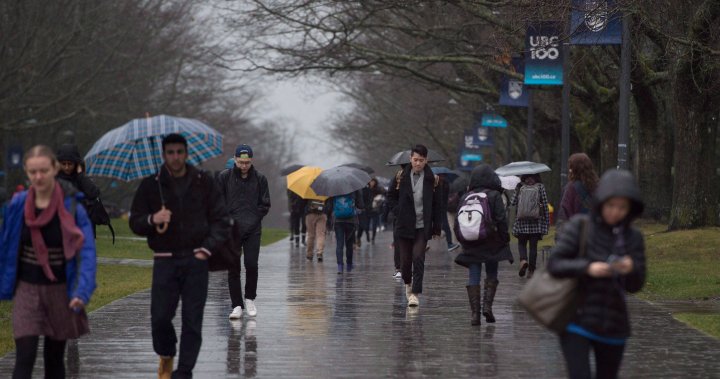The “financial risks” that the cap on international students poses to Canadian universities and colleges is spurring renewed calls for provinces to step up and restore higher levels of funding.
Isaac Garcia-Sitton, executive director of international student enrolment, education and inclusion at Toronto Metropolitan University, told Global News the cap is bad news for universities.
“This cap will bring financial risks for institutions, which may translate into layoffs, program closures and fewer services for students,” he said.
Student and teacher groups say a cap on the intake of international students announced earlier this month is not an adequate solution for the housing and education sectors, and they’re calling on provinces and territories to increase public funding for colleges and universities.
“The government’s proposals for oversight of our postsecondary institutions miss the mark and focus on a manufactured crisis,” said Nigmendra Narain, president of the Ontario Confederation of University Faculty Associations (OCUFA), in a statement on Friday.
“Ontario needs international students, but universities need more funding from the government to provide the support that international — and domestic — students need to succeed inside and outside the classroom,” he said. “The Ministry has not provided any tools to do this with these proposals.”
The reaction comes after the federal government’s announcement of a national cap on the intake of international students into Canada.
OCUFA, which represents 18,000 academic professionals across Ontario, said the province had ignored “the fundamental mission of universities to develop critical research, teach problem-solving and critical thinking, and to prepare today’s students for the jobs of tomorrow.”
“A university education is, and has been, versatile and adaptable to the labour market for decades,” Narain said. “The government must support the innovation and pursuit of excellence that universities provide to our province’s economy.”
Get the latest National news.
Sent to your email, every day.
Jenny Ahn, executive director of OCUFA, said the group wants to see an annual increase in funding of 11.75 per cent for the five years.

Student groups have also called for greater provincial funding.
“International students are being used as a scapegoat for the housing crisis and the actions of predatory post-secondary institutions,” said Manpreet, chairperson of the Alliance of BC Students (ABCS).
“This visa cap is not going to solve the important issues we are facing. If governments really want to address these issues, they need to increase public funding to B.C.’s post-secondary education system, build more student housing, cap international student tuition increases to the same rate as domestic students, and mandate that post-secondary institutions provide adequate support for international students.”
According to ABCS, B.C. government funding to post-secondary institutions had dropped from 90 per cent in 1979 to just over 33 per cent now. It said this was why learning institutions have come to rely on international students.
“The provincial government needs to increase public funding to post-secondary institutions,” Manpreet said.
“Domestic students aren’t subsidizing international students. In reality, international students not only subsidize the domestic post-secondary system through sky-high tuition rates, they contribute $4 billion and 40,000-plus jobs to the BC economy.”
The federal government’s cap on the intake of international students has drawn sharp reactions from learning institutions across the country, with concerns it will impose major financial challenges on colleges and universities and the services they offer without an increase in funding.

The cap is expected to result in approximately 364,000 approved study permits — a decrease of 35 per cent from 2023.
Around 800,000 international students currently call Canada home, with thousands more expected to come with every new academic year. According to Statistics Canada, the gulf between domestic and international fees is significant.
In the 2022-23 academic year, the average domestic student in Canada paid $6,834 in tuition. By contrast, the average international student paid nearly six times that amount at $36,123.
Experts say the gap can be attributed to the steady decline in funding of post-secondary institutions across Canada since the 1970s.
A 2020 Global Affairs Canada report said international students in Canada spend $22.3 billion on tuition, accommodation and discretionary spending every year. This is in addition to international students being a major source of labour for Canada, which has faced a worker shortage in recent years.
While universities, too, rely on international student tuition, it is Canada’s colleges that have come to rely heavily on those revenues over the last decade.
© 2024 Global News, a division of Corus Entertainment Inc.




